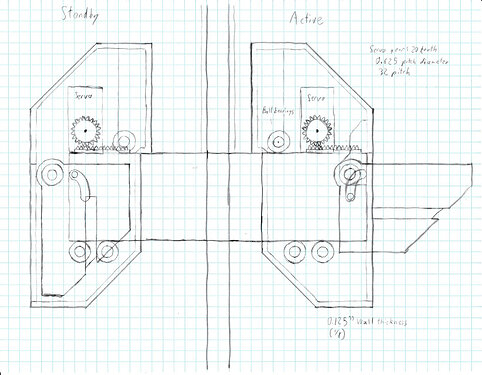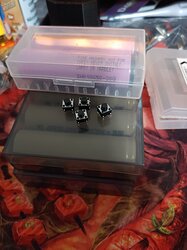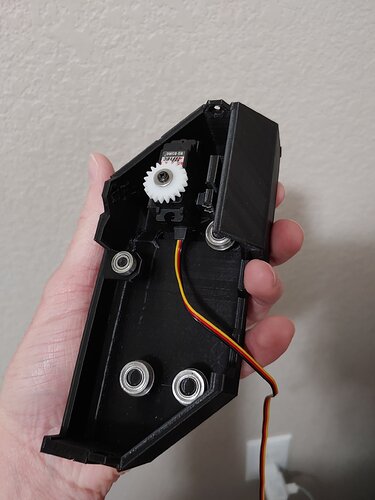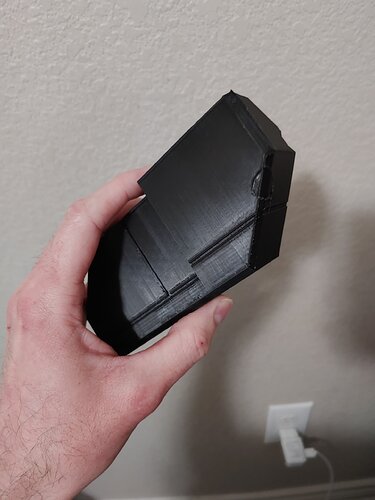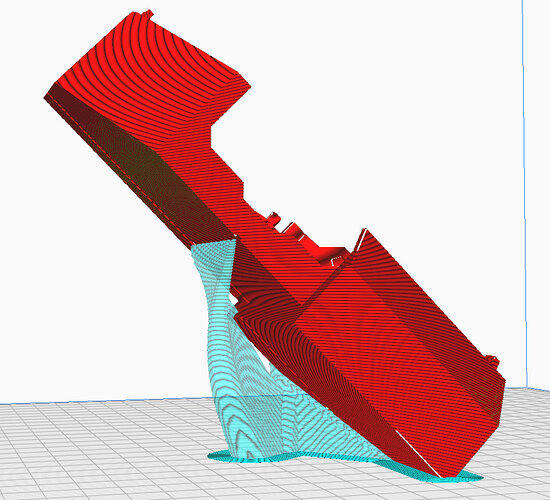Been a while since I’ve given an update on this project.
But first a quick question, just to be sure. I read that the 5V output on the proffieboard is normally only on when sound is playing. There may be some rare cases where I need to power the servos without sound playing. The main one would be on startup: If the power had previously been cut while the hilt was in a transformed state, then the servos would need power to reset back to the standby position.) So would the 5V pad still be suitable for that?
Anyways, on to the update to this project. This will probably be the last sketch I post, because at this point I think it’s ready for 3D modeling! That just might take a little while because I unfortunately no longer have access to the software I’m most familiar with, so I’ll need a little bit of time to relearn with different software. That’s going well so far though. I’ve been working through some online video courses and progressing pretty quickly.
So as for details, the main reason I had originally wanted to surround the centerpiece with gears was to counteract friction and reduce wiggling and lateral movement by having something to “hug” and apply force on both sides. Well, I don’t know how I didn’t think of this sooner, but the need for all that can be gotten rid of simply by having it roll along ball bearings instead of just sliding through!
I sketched it out with gears, but this could also use horns too. In the active/transformed state, the horn would be pointing straight down and have a pin going into a track in the centerpiece. In standby/untransformed state, the horn will be pushing the centerpiece outwards (or more accurately, pushing itself and the side piece housing it away from the center)
I’m most likely going to stick with a gear and rack driving system in the end though since it’ll keep the forces closer to the servo and therefore reduce the amount of torque needed.
I’m also going to tweak the cam-slot system for the wings a bit as well.

After looking at it as an animation, I think Celemourn was right, particularly when the side pieces are spreading out and wings are retracting. I can see the near-perpendicular face of the slot possibly causing problems there. Though at the same time, I think the curved shape would still work best when the sides compress and the wings pop out.
So I’m going to try using both at once! The innermost wall of the slot will keep the curve, while the outermost wall will be mostly straight, save for just the endpoints which will have a slight edge that the cam will “fall” into to hold it in place until the mechanism moves again. Also, instead of a simple peg, I’ll use a tiny ball bearing. With this setup, the wing will ride along the curved wall when transitioning from standby to active, and will instead ride the straight wall when transitioning back.
Some 3D images of the hilt are coming soon! And I should have all the materials I need for getting started with building a blade by the end of the weekend! I’ll be starting with a coated foam blade, and maybe will try a nylon or PC blade at a later date.
